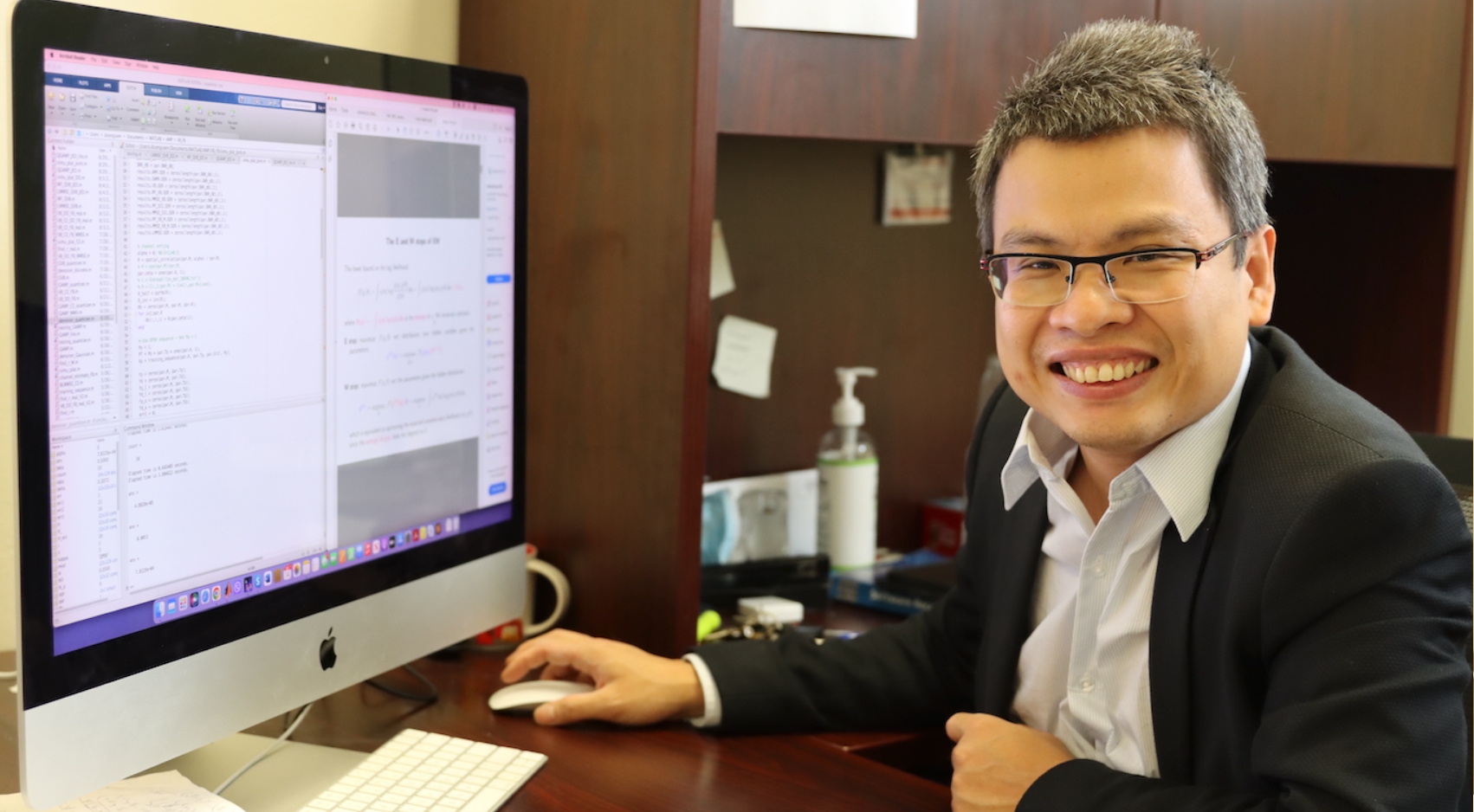Beyond 5G: SDSU Professor Earns NSF CAREER Award
Electrical and Computer Engineering professor Duy Nguyen is the latest to earn the prestigious NSF CAREER Award for his work on wireless communications.

We have sensors in our cars, our phones, and now even our homes — all meant to make our day-to-day lives easier through the use of wireless communications. Electrical and Computer Engineering professor Duy Nguyen wants to make these machine learning and signal processing algorithms even stronger — and our lives even easier.
Nguyen has earned an NSF CAREER Award of $500,000 over the next five years for his research on wireless communications, signal processing, and machine learning. The NSF Faculty Early Career Development (CAREER) Award is the NSF’s most prestigious award for early-career faculty.
More Antennas, More Data
Nguyen’s work deals with MIMO(multiple-input, multiple-output) systems, a wireless technology that uses multiple transmitter and receiver antennas to transfer more data at the same time to anything requiring it, such as a smart watch.
MIMO came to popularity during the emergence of the wireless local area network (LAN), a wireless computer network that links two or more devices using wireless communication to form a LAN within a limited area, like an office building. This enabled the on-the-go internet use of users on laptops and cell phones.
MIMO technology eventually led to 3, 4, and now 5G data networks. "With MIMO, you can transmit multiple data streams at the same time and on the same frequency," said Nguyen. "By increasing the number of antennas, you can greatly increase the data rates. That's a key technology for 5G reception."
More Wi-Fi antennas in your home, for instance, allow for more devices such as phones, televisions, and computers to connect at once with strong reception. The same concept applies to data connectivity in everyday life, said Nguyen.
"We need massive connectivity in the future. Cars, cameras, and other devices have a lot of sensors, and the only way to support many devices is to increase the dimension of the data," said Nguyen.
The need for enabling massive connectivity using energy- and cost-efficient massive MIMO wireless transceivers, mobile devices, sensors, and actuators motivates the use of low-cost hardware. However, these hardware components are highly susceptible to generating nonlinear distortions.
Nguyen, who is celebrating his seventh year as a professor at SDSU, receives the 2022 NSF CAREER award to develop new learning frameworks and signal processing algorithms to resolve the nonlinearities in wireless transceivers and optimize massive MIMO performance. He will start, he said, with a practical model that will then develop into an algorithm on top of the model.
Optimizing Future Telecommunications
On top of this, Nguyen has also earned another collaborative NSF award that will focus specifically on 5G networks, which he will work on alongside collaborators at the University of California, Irvine.
"I have been so lucky to have had Duy as a collaborator,” said Lee Swindlehurst, professor of Electrical Engineering and Nicolaos G. and Sue Curtis Alexopoulos Presidential Chair at UC Irvine. “He has brought so many new ideas and perspectives to me and my research group. He is as strong a young professor as there is in the U.S. right now working on problems in signal processing for wireless communications.”
Nguyen's Ph.D. students have also expressed their appreciation for the skills learned in Nguyen's laboratory: “I have learned so much from Dr. Nguyen’s remarkable technical knowledge and research enthusiasm, and I am so happy that his untiring research efforts and patience have been recognized with these new NSF grants”, said Van Ly, a Ph.D. student working under Nguyen for five years.
To assist with these two research grants, Nguyen looks forward to recruiting two to three new Ph.D. students for fall 2023 to focus on wireless communications, signal processing, and machine learning.
As for coursework, Nguyen plans to use his research funding to create a digital communications course — one in which he is able to incorporate hardware. Currently, the course only has the capacity to focus on theory, but with the grant he hopes to incorporate off-the-shelf hardware to develop wireless communications systems of their own.
Nguyen is off to the races. He says at the rate he and other researchers are going, even faster and more data-heavy 6G networks should be available to us on our phones in less than ten years.



